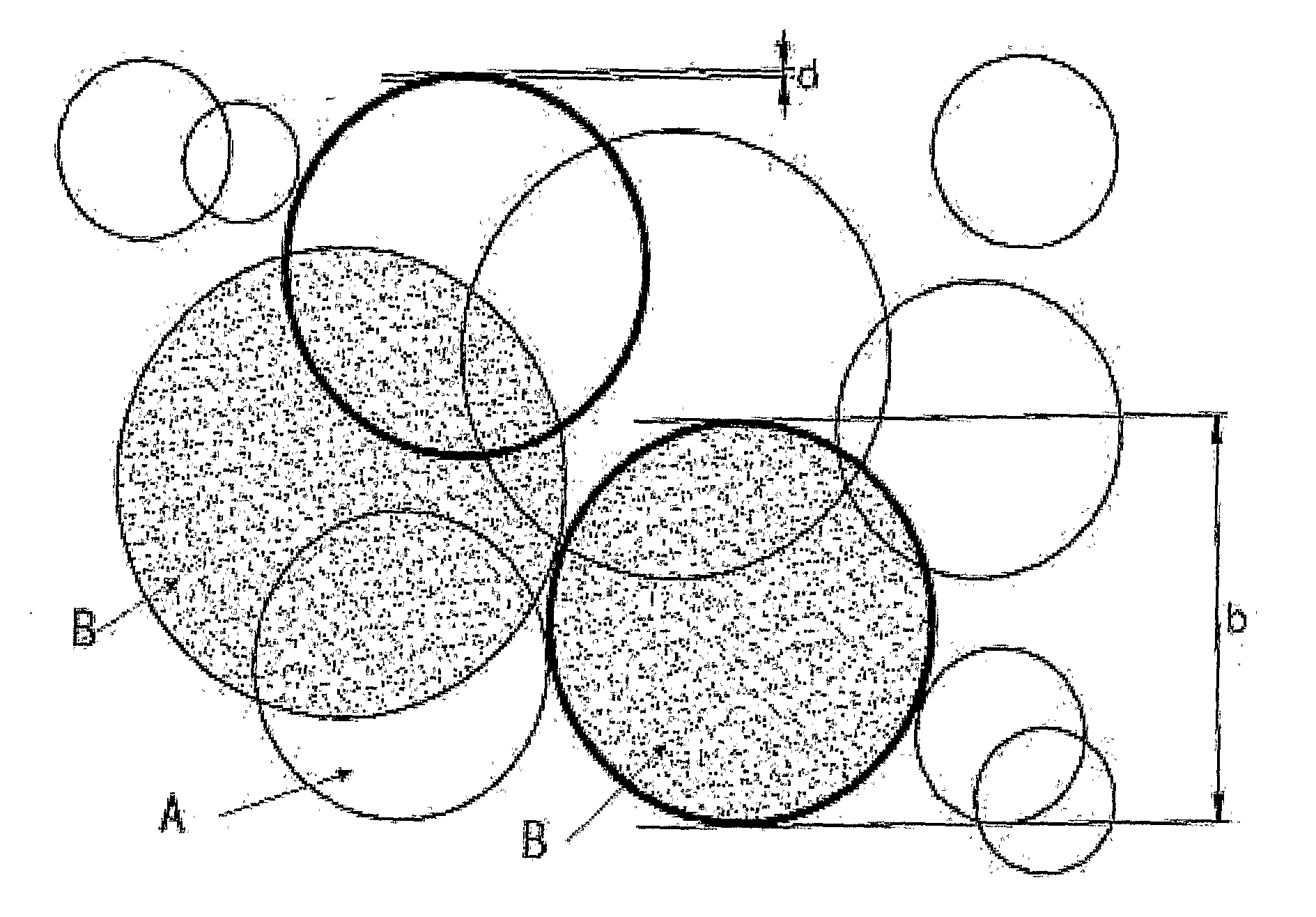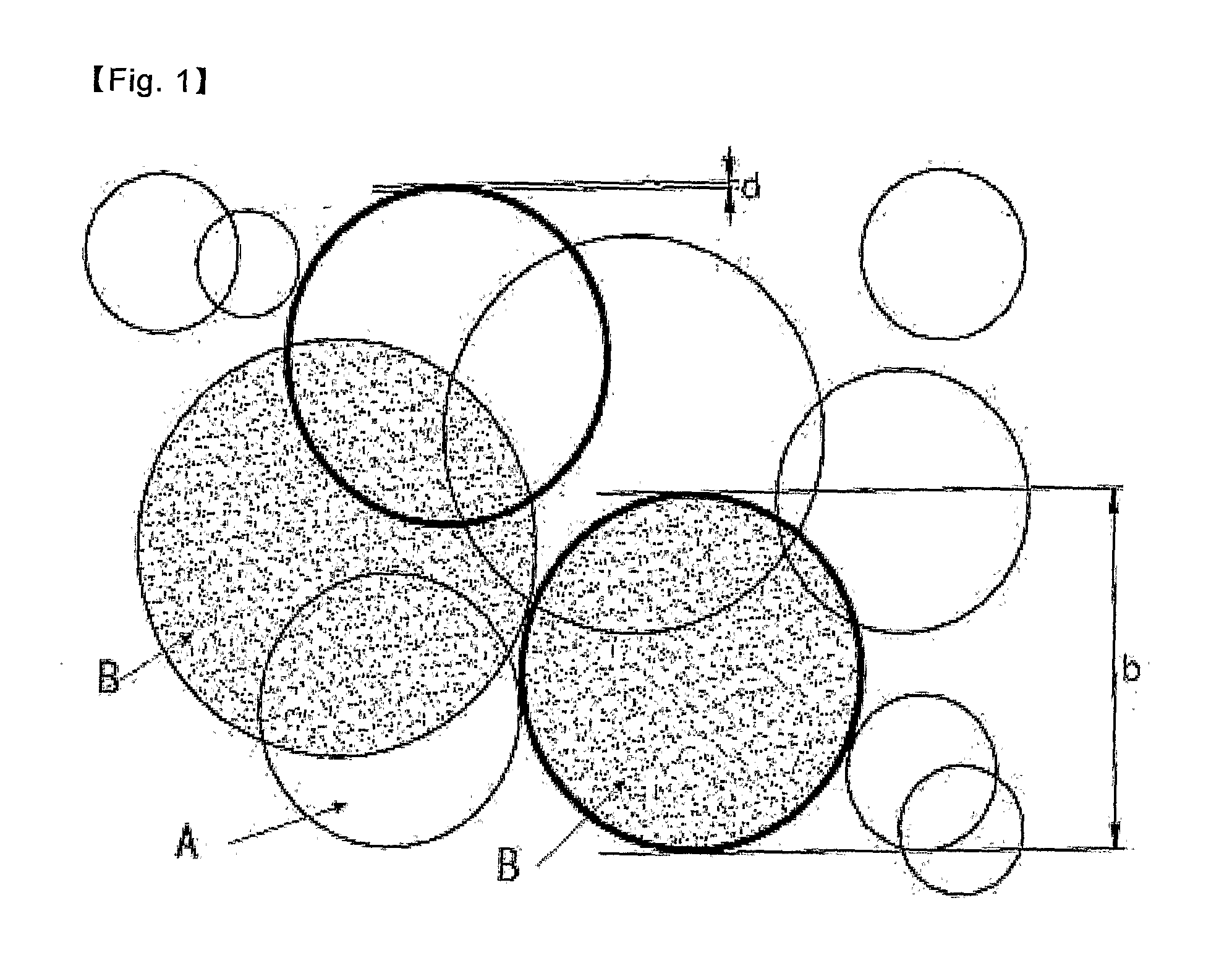Carbon nanotube conductive layer using spray coating and preparing method thereof
a technology of conductive layer and carbon nanotube, which is applied in the direction of electrically conductive paint, instruments, transportation and packaging, etc., can solve the problems of inability to change the electrical properties of cnt transparent electrodes, inability to retain satisfactory transparency and condtutivity, etc., to improve transparency and conductivity, and simplify the generation procedure
- Summary
- Abstract
- Description
- Claims
- Application Information
AI Technical Summary
Benefits of technology
Problems solved by technology
Method used
Image
Examples
exemplary embodiment 1
[0054]Single-walled carbon nanotubes (SWNT) of 3.0 mg and a SDS dispersing agent of 1.5 mg are put in distilled water of 200 ml and they are evenly mixed together. The mixed material is dispersed for an hour by use of a bath sonicator (Branson 5510 at 40 kHz and 135 W), and then the dispersed material is used as a coating solution.
[0055]A polyethylene terephthalate (PET) film is used as a base. The base is placed on a heating plate heated at 70° C., and spray-coated with the coating solution by use of a spraying device (Anest Iwata W-100). Then the spray-coated base is dried out to fabricate a CNT transparent conductive layer. In this case, the coating solution is sprayed at a pressure of 5 kgf / cm2.
[0056]The fabricated CNT transparent conductive layer is enlarged by 200 times and observed by using a microscope (OLYMPUS BX51) as shown in FIG. 3. The sheet resistance and transparency of the CNT transparent conductive layer are measured and shown in Table 1 below.
[0057]Referring to FIG...
exemplary embodiment 2
[0058]3.0 mg of single-walled carbon nanotubes (SWNT), 1.5 mg of a SDS dispersing agent and 200 ml of distilled water are evenly mixed together.
[0059]The mixture is dispersed for an hour by use of a bath sonicator (Branson 5510 at 40 kHz and 135 W), and then the dispersed material is used as a coating solution.
[0060]A PET film is used as a base, and the film is heated by placing it on a heating plate heated at 70° C. Then, the base is spray-coated with the coating solution by use of an ultrasonic sprayer (from Samsung Electronics) by spraying the solution at a pressure of 1 kgf / cm2. Then the spray-coated base is dried up to fabricate the CNT transparent conductive layer.
[0061]The CNT transparent conductive layer fabricated in accordance with the current embodiment is enlarged by 200 times and observed, as shown in FIG. 4. The sheet resistance and transparency of the CNT transparent conductive layer are measured and listed on the Table 1 below.
[0062]Referring to FIG. 4, it can be con...
PUM
| Property | Measurement | Unit |
|---|---|---|
| Temperature | aaaaa | aaaaa |
| Thickness | aaaaa | aaaaa |
| Pressure | aaaaa | aaaaa |
Abstract
Description
Claims
Application Information
 Login to View More
Login to View More - R&D
- Intellectual Property
- Life Sciences
- Materials
- Tech Scout
- Unparalleled Data Quality
- Higher Quality Content
- 60% Fewer Hallucinations
Browse by: Latest US Patents, China's latest patents, Technical Efficacy Thesaurus, Application Domain, Technology Topic, Popular Technical Reports.
© 2025 PatSnap. All rights reserved.Legal|Privacy policy|Modern Slavery Act Transparency Statement|Sitemap|About US| Contact US: help@patsnap.com



